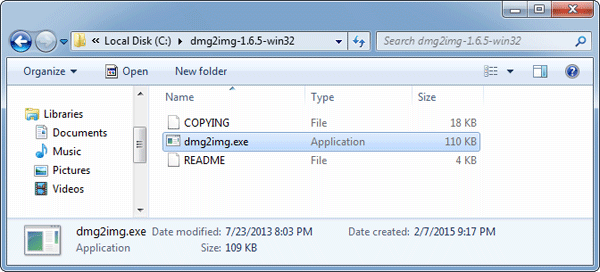Summary: Refactor the block/dmg.c driver to read ranges within a chunk instead of reading an entire chunk at a time.
Contact: Stefan Hajnoczi <stefanha@redhat.com> for questions
Free ISO Creator is a simple DMG to ISO converter software for Windows. You can add DMG files or folders containing DMG files using dedicated option. After doing so, provide output ISO image path and click on Convert button. Before starting conversion, you can set some options and size limit. By clicking on Options button, you can make bootable.
This dmg file is in essence an ISO file in s slightly different format. We'll need to convert it. Open up Disk Utility and: From the menu bar, select Images Convert and point it to your.dmg file. In the Save As dialog that follows, select DVD/CD master. Disk Utility will insist on saving the new ISO as a.cdr file, but it is really an ISO. Hi Guys,This video is about converting file from.raw file to.dmg file using Power ISO.A very straight forward process.#convert#.raw#powerISO#.dmg#macOS#Win.
NOTE: This task has been started in February 2017 by sporgj_ <sporgj@gmail.com>. Contact Stefan if you want to work on it and it appears to have been abandoned.

The dmg file format is Apple's disk image format. It is sometimes used in place of an ISO file and also for software distribution. The file format is not officially documented but information on how to interpret it is available on Wikipedia and here.
QEMU's block/dmg.c block driver performs I/O in 'chunk' units. Chunk information (size, offset, etc) is read from file's metadata when it is opened. Chunk size is variable so the block driver takes the maximum chunk size as its I/O buffer size. That way the driver can guarantee all data read from disk will fit into the buffer.
The problem with this approach is that chunks in some files are large. QEMU must prevent corrupt or malicious image files from causing it to allocate huge amounts of memory. This is important to prevent denial-of-service in cases where untrusted files are being accessed by the user.
Files seen in the wild have chunk sizes around ~250 MB. This exceeds the hardcoded 64 MB limit and produces the following error message:
The task is to refactor the block driver to avoid reading an entire chunk into a buffer for each read request. Instead it should seek to the range within the chunk and only read bytes that are actually being requested.
This is complicated by the fact that chunks may be deflate or bz2 compressed so special logic is needed to seek through compressed data. Study the zlib and libbz2 APIs to find out how to achieve this.
Dmg File Is Bigger Than Converted Iso Size Chart
